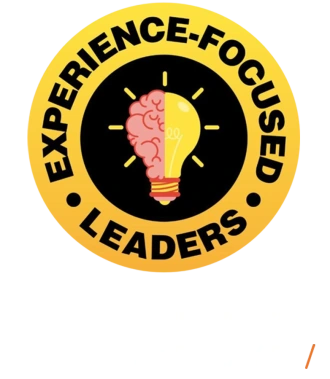Listen to the Podcast Episode on Your Favorite Platform

.svg.png)

The Future of Content Marketing: Embracing AI with a Human Touch
.png)
What I find is that AI tends to be full of hyperbole. It's very flowery and has some verbal tics that it tends to use. So if you ask it to write an email, it's almost guaranteed that the email will start with something along the lines of, "I hope this message finds you well." And whenever someone sends me an email like that, I'm like, "Oh, hello, robot." (Pamela Wilson)
(00:00-08:07)
Pamela shares her insights on the current state of content marketing, noting that while AI tools like ChatGPT can generate quick ideas, they often need human guidance to ensure accuracy and tone. She humorously likens AI-generated content to an "over-caffeinated intern"—fast but prone to errors without careful editing.
The conversation shifts to the importance of maintaining a unique voice in content. Pamela highlights the use of customer avatars to refine AI output and prevent generic messaging, urging listeners to be mindful of common phrases that signal automated content.
The duo also explores the integration of video into content strategies. Pamela explains that her team focuses on creating short, impactful videos that resonate with their audience, often incorporating client testimonials and insights that AI simply can't replicate. By producing videos that are 3-4 minutes long, and even shorter snippets for social media, they manage to attract viewers while ensuring the content is digestible.
Lastly, they discuss the challenge of making long-form video accessible. Pamela mentions their approach of creating concise content that leads viewers to more in-depth resources, balancing short attention spans with the need for meaningful engagement.
.png)
Capturing Attention in a Busy B2B World: Marketing Strategies for the Modern Buyer
.png)
People are not just using AI tools to research the companies they should look at. Eventually, I believe they will start using AI tools to help make some decisions for them, especially for smaller purchasing decisions. Wouldn't it be great to go to a tool and say, "I need...?" (Pamela Wilson)
(08:07-15:11)
The speakers discuss strategies to make content resonate with different audience segments—beginner, intermediate, and advanced.
For beginners, Pamela suggests crafting compelling openings in videos and blog posts to spark interest. This might involve jumping straight into a relevant story or presenting a solution to grab their attention. For the intermediate audience, content should focus on "how-to" guides that help them apply their knowledge, while the advanced audience benefits from detailed comparisons of industry vendors to assist in their buying decisions.
The conversation highlights a significant shift in consumer behavior—today's buyers are proactive and informed, often using AI tools like Perplexity and ChatGPT to research their options. Pamela reflects on how this trend has intensified since she first recognized it in 2016, noting that consumers no longer wait for marketing materials to find answers; they actively seek out information to make qualified decisions.
Alex adds that tools like Perplexity can save time for busy professionals by organizing answers and citing original sources, making them a valuable resource for B2B buyers. Pamela points out that DCS has structured its content effectively, leading to high visibility in these AI-driven platforms.
Looking to the future, Pamela anticipates that AI tools will play an even bigger role in the purchasing process, potentially allowing users to make decisions based on curated content. She stresses the need for marketers to adapt by ensuring their content is optimized for both search engines and AI tools, paving the way for success in the changing market landscape.
.png)

AI, Benefits, and the Future of Content: A Deep Dive
.png)
One of the things I’m really grateful for is the strong relationship we have with the sales team at DCS. They constantly share the questions and objections they hear when talking to prospects. (Pamela Wilson)
(15:11-24:34)
Alex explains how AI is transforming decision-making, particularly in the employee benefits sector. He notes that AI tools are helping carriers, brokers, HR personnel, and employees sift through complex benefits information. Instead of generic answers, users now expect precise responses that guide them directly to the relevant documents, providing a full picture in context. Alex likens this to how tools like Perplexity work, helping users navigate a wealth of information while making the decision-making process more efficient.
He observes a growing trend in buyer behavior where more people are comfortable delegating up to 80% of the search process to AI-driven tools. However, Alex wonders whether the industry has begun tracking traffic from platforms like Perplexity, or if it's still a niche area.
Pamela acknowledges Alex's point about Perplexity but admits she hasn't seen much traffic from these tools in her space yet. However, she is confident that their usage will grow, especially as more companies and consumers become comfortable using AI for research and decision-making. As an early adopter herself—she started using ChatGPT within a week of its release—Pamela understands the potential of these tools but remains cautious about assuming her audience is as quick to adopt new technology.
She also discusses the gap between AI enthusiasts, like venture capitalists, and the more traditional buyers in industries like healthcare. While forward-thinking companies are eager to experiment with AI-driven tools, the majority of the market is still catching up.
Shifting gears, Alex asks Pamela about the frustrations she sees in B2B marketing today, particularly around the slow pace of change in some areas. Pamela expresses her disappointment in how AI has worsened an already existing problem—content quality. She recalls the early days of content marketing, where companies focused on generating as much content as possible, regardless of its quality, just to rank on Google. The rise of "content mills" prioritized keyword stuffing over creating engaging, informative material.
Now, with AI making it easier to churn out vast amounts of low-quality content, Pamela sees a similar problem re-emerging. However, she views this as an opportunity for companies that prioritize thoughtful, well-crafted content to stand out. By focusing on building trust and providing value, businesses can differentiate themselves in a crowded, AI-saturated landscape.
Pamela highlights how her team at DCS creates high-performing content by addressing the specific questions and objections they hear from their sales team. Whether it’s turning objections into informative blog posts or crafting comparison content that positions DCS against its competitors, Pamela believes that directly addressing customer concerns is key to creating content that resonates. Comparison content, in particular, performs well because it allows prospects to evaluate options in one place, with DCS controlling the narrative.
.png)
Creating Great Content: Tips for Gating, SEO, and Guiding Buyers
.png)
You have to step up to the plate and take a lot of swings, and then every once in a while, you hit a home run. But you don’t always know ahead of time which post will be a big hit. To find those big successes, you have to consistently publish high-quality content. Worst case scenario, you just get better and better at creating high-quality content over time. (Pamela Wilson)
(24:34-32:01)
Pamela explains that while SEO typically emphasizes content at the top of the funnel to attract traffic, her team’s real success comes from content that engages buyers in the later stages of their journey. She highlights a piece of content published in early 2023 that has already generated an impressive 144 deals. According to Pamela, it's about consistently creating high-quality content, knowing that not every post will be a home run, but each one refines the process and increases the odds of success.
The conversation then shifts to the controversial topic of gating content. Alex notes that, historically, tools like HubSpot and Marketo made gating the default strategy for capturing leads. But today, there's growing debate over whether this is still effective. Pamela shares her belief that gating still has its place, but only in moderation and at specific stages of the buyer journey. For example, offering a valuable resource like a PDF or a webinar behind a gate can help engage leads early on, allowing you to nurture them with educational content. However, it’s important not to overdo it—gating too much content can turn prospects away.
Pamela offers a balanced approach: provide high-value content upgrades behind gates, such as adding extra tips or insights that expand on a blog post, while leaving most of your content freely accessible. This helps her team understand what topics are most relevant to their audience, allowing them to nurture leads with the right information. As prospects move closer to making a buying decision, the goal is to remove any remaining friction and make it as easy as possible for them to reach out and start a conversation with sales.
Alex echoes Pamela's points, describing the frustrations buyers feel when they encounter long forms or tricky lead capture tactics. He mentions how some companies gate late-stage, more valuable content, which can create unnecessary barriers for potential customers. Both Alex and Pamela agree that reducing friction is critical—when a buyer is ready to make a decision, they shouldn’t have to jump through hoops to reach you.
Pamela points out that buyers often arrive at the decision point because they have a pain that needs fixing right away. Asking them to fill out a lengthy form for basic information, like their phone number or address, is a recipe for frustration. Instead, she advocates for a smoother, more user-friendly process that allows buyers to easily schedule a call or indicate interest, without having to submit excessive details.
.png)

Making It Easier for Prospects: Simple Changes for Better B2B Experiences
.png)
My philosophy is to find a way to nurture people early on—give them plenty of free information. But also, put out some appealing bait, right? We’re fishing for leads, after all. You put out something enticing, and see if you can get some people to sign up, so you can nurture them and continue to engage over time. And then, when it’s time for them to buy, you want to make that as easy as possible. (Pamela Wilson)
(32:02-39:52)
Pamela highlights a significant gap in how businesses approach potential customers. She notes that many organizations fail to consider the mindset and experience of prospects actively seeking solutions. “You can't make it hard for them to find that solution,” she states, likening the act of complicating access to a locked door in front of a salesperson ready to assist. Her philosophy emphasizes nurturing leads early in the process by providing ample free information and appealing offers, or "bait," to encourage sign-ups. This approach not only attracts prospects but also helps in building a relationship over time.
The discussion then shifts to the often frustrating experience of filling out lead generation forms, particularly those that are either overly lengthy or deceptively complex. Alex points out that once a prospect submits their information, they are typically met with a generic “Thank you, you’ll get an email from us” message, leaving them to sift through their spam folder for the promised content. “If I’m on my phone, this already takes me out of the equation,” he says, illustrating the disconnection that can occur at this stage.
Alex and Pamela express their shared annoyance with the standard practice of sending lengthy PDFs as lead magnets. Alex describes a scenario where a prospect finally accesses a 40-page document only to find that it lacks proper navigation, making it a tedious task to reach the desired information. Pamela echoes this sentiment, emphasizing that many PDFs are poorly designed, simply dumping text without considering the user experience. She argues that this approach not only fails to impress the audience but also misses a critical opportunity to build trust.
.png)
Why Your Content Needs a Call to Action (and a Great First Impression)
.png)
If you don’t include a call to action at the end, what you’ve created is content, not content marketing. It becomes content marketing when you include a call to action.(Pamela Wilson)
(39:52-52:03)
The conversation begins with Alex pointing out a pervasive issue in sales presentations, especially those that serve as leave-behinds. He notes that it’s common for these materials to conclude with a simple “thank you” or, at best, a QR code, which he describes as a missed opportunity for deeper engagement.
Alex likens this to an athlete who, after training hard for a race, stops just before crossing the finish line. He argues that this pattern reflects human nature—people often focus intensely on the preparation and delivery of their content but neglect the final steps that encourage the audience to take action. His observation raises an important question: why do so many content creators stop short of prompting their audience to engage further, such as visiting a website or signing up for a service?
Pamela responds, affirming that she has witnessed this pattern frequently. She emphasizes a crucial distinction: if a piece of content doesn’t include a call to action, it is merely content, not content marketing. She asserts that content becomes effective marketing only when it actively encourages the audience to do something—whether that’s clicking a link, signing up for a newsletter, or reaching out for more information. Alex expresses excitement at this framing, indicating that it encapsulates the essence of their discussion beautifully.
Pamela underscores the critical role of first impressions in content. She explains that in the world of content creation, the opening moments—whether it’s the introduction to a podcast, the first few seconds of a video, or the headline and first sentence of a blog post—are vital for capturing the audience’s attention. She stresses that without a compelling beginning, viewers and readers are unlikely to make it to the end, where the all-important call to action resides.
To help alleviate anxiety around content creation, Pamela offers a practical tip: use AI to generate a bunch of headline ideas. Even though most won’t be great, there’s usually one or two gems that can inspire a fantastic headline. And getting the headline right is crucial to pulling people in.
Alex then talks about the visual side of things, like adding B-roll footage to make content more engaging. He explains how visuals can create a memorable experience for the audience and show that you care about the details. Something as simple as a good background image can bring content to life, making it more appealing than just a plain PDF. People notice when there’s thought behind the presentation.
Pamela responds with a simple analogy. Imagine walking down the street in an unfamiliar town, hungry for lunch. You pass three restaurants: one has a closed door and no clue what’s inside, the second is slightly more open, but still unclear, and the third has an open door, a menu displayed outside, and maybe a friendly host. Naturally, you’re going to choose the third one because it’s inviting and gives you the information you need upfront. That’s what content should do—open the door, tell people what they’re going to get, and why they should pay attention.
The speakers wrap up by emphasizing that grabbing attention early is critical, and so is making sure there’s a clear call to action. Alex thanks Pamela for sharing her insights, and Pamela encourages listeners to check out her website, PamelaWilson.com, or visit DentalClaimSupport.com, where her team applies all these principles to their content every day.
.png)
Check the episode's Transcript (AI-generated) HERE.
Other Episodes

Godard Abel | CEO of G2
S 01 | Ep 6 Where You Go for Software: Reach Your Peak


Dean Stocker | CEO of Alteryx
S 01 | Ep 8 Turning Your Customers Into Your Biggest Champions


Peter Fader | Co-Founder of ThetaCLV
S 01 | Ep 10 Turning Your Marketing Into Dollars

Author

Experience-focused Leaders is the #1 Multimedia Podcast! We talk to senior business & tech leaders about the experiences that move forward organizations, customers and society at large. True to form, we mix audio, video, web and eBook formats to turn these authentic conversations into personalized nuggets you'll remember & use.



.png)
